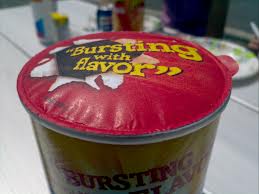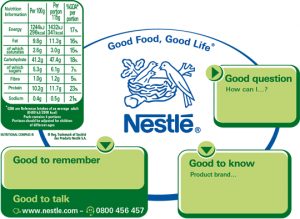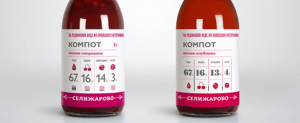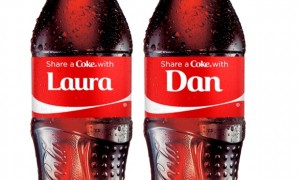
SOURCE: Dreamstime.com
Two posts caught my eye recently as they both referred to the importance of multi-channel communications. If you are looking for inspiration and new ideas in this area, then read on. In particular we will speak about the often forgotten opportunity for communicating through packaging.
The first article was by Jim Tierney at Loyalty360 in which he commented on the results of a new survey in the USA by IBM, concerning cross-channel integration. The research found that…
“only 35% of leading marketers currently integrate their campaigns across all channels, with 8% indicating they are not currently integrated at all. In comparison, only 12% of the remaining marketers surveyed currently integrate their campaigns across all channels, with 39% saying they are not currently integrated at all”
The other post on the same topic was from Ginger Conlon, Editor-in-Chief at Direct Marketing News. In it she spoke of the recent Responsys Interact2013 event and the keynote speech by Scott Olrich Responsys’ President:
“Most marketers still cling to blast campaigns,” he said. “Smart marketers focus on digital and addressable.” They’re now able to deliver on the promises of personalization made 10 years ago, Olrich added.
Why is doing so important? Customers today expect personalization, choice, and value—because they get it already from leaders such as Amazon, which is one company creating personalized experiences at mass scale.
One way to do this: Flip the model, said Steve Krause, SVP of product management at Responsys. Today most marketers start with the campaign, create an offer, schedule it, and send to mass audience; instead, Krause said during his presentation, marketers should start with customer, build profiles, design experiences, and personalized interactions.
As a customer centricity specialist myself, I particularly liked Steve’s comment about starting with the customer; do we still need reminding that this is the first business essential today? Perhaps we do. However, neither article spoke about the opportunity of communicating through packaging, so I would like to add my own thoughts about it.
I wrote a post last year on C3Centricity Dimensions about the opportunity packaging provides to connect directly with customers at the critical point of product trial (you can read it HERE). In that post, I gave some good examples from Kellogg’s Pringles and Nestlé’s Nutritional Compass. This time I would like to add a couple of other interesting examples I have come across recently, where the messaging has become even more personalized.
Pringles goes from allaying a negative to a full blown campaign
Who doesn’t know Pringles, the brand of potato- and wheat-based stackable snack crisps sold in 2012 by P&G to the Kellogg Company?
Pringles started using the freshness seal to communicate to their consumers, by prinitng “Bulging with flavour” to explain the swollen lid. At the time I was fascinated by the fact that Pringles had been able to turn what might have been perceived as a negative (bulging lid = altered product inside) into a positive, through this simple message.
Today, I am even happier to report that since then, Pringles have turned that short message into a full promotional campaign for the brand.
Food & Beverage manufacturers become more transparent
Nestlé has been communicating on-pack concerning the ingredients of their products since 2005. According to their website, the “Nutritional Compass” provides their consumers with four valuable pieces of information: a standardized nutrient table, a “Good to Know” panel explaining ingredients or nutrients relating to the product, a “Good to Remember” panel with tips for responsible product enjoyment, and a “Good to Talk” panel with contact details and links to consumer services. By the end of 2008, they were claiming that its Nutritional Compass had been added to 98% of its global product packaging by total sales volume.
Arguably more appealing today, many other food & beverage companies have started using infographics to share similar information. One example from :OTVETDESIGN in Russia and included in an interesting post at PATH, is from Selizharovo Cannery. Selizharovo is using this approach to communicate the contents of its products, with clean and concise graphic’s that are an integral part of the branding. Innocent do something similar, but only for the list of their ingredients on the side panel.
By making the ingredient list so visual and key to the packaging execution, the brand projects transparency, honesty and authenticity – all important attributes for consumers tired of recent scandals concerning product misinformation. To read the full post and see more packaging examples using infographics, click HERE.
Newer, more personalized messaging
Recent uses of packaging for direct connection with the customers, show an exciting and much more personalized approach.
For example, Coca-Cola is putting people’s names on its bottles and cans this summer as part of its ‘Share a Coke’ campaign.
They will be printing the most popular names in each country, or using a simple “Him” and “Her” label, when this is not possible.
Many banks offer their clients the possibility to personlize their bank or credit cards.
Although this has been true for many, many years, there seems to have been a recent revival in emphasizing this personalized alternative to the standard cards.
The often forgotten media channel
Packaging is a wonderful medium for communicating with your audience and yet many companies still seem to be ignoring it. My question to all marketers is therefore “Are you aware you are doing this”? I am sure many of you see packaging as purely a product protection mechanism or a facilitator of shelf impact. Whilst both of these are of course important, the opportunity of engaging with your customers whilst they are in the process of using your product has enormous value. Isn’t it time you took another look at yours?
If your company is effectively using its packaging to communicate more than just its ingredients or usage instructions, why not share it below and let your brand get the recognition it deserves and shine in the spotlight? We would love to see even more best-practice examples.
For more information on all aspects of brand communications please check out our website.
Do you feel that your own communications could be even better? Is your copy testing coming too late or stifling creativity? Let us show you a new way to evaluate your concepts earlier in their development process. Using it will save you considerable resources of both time and money. Contact us here.




